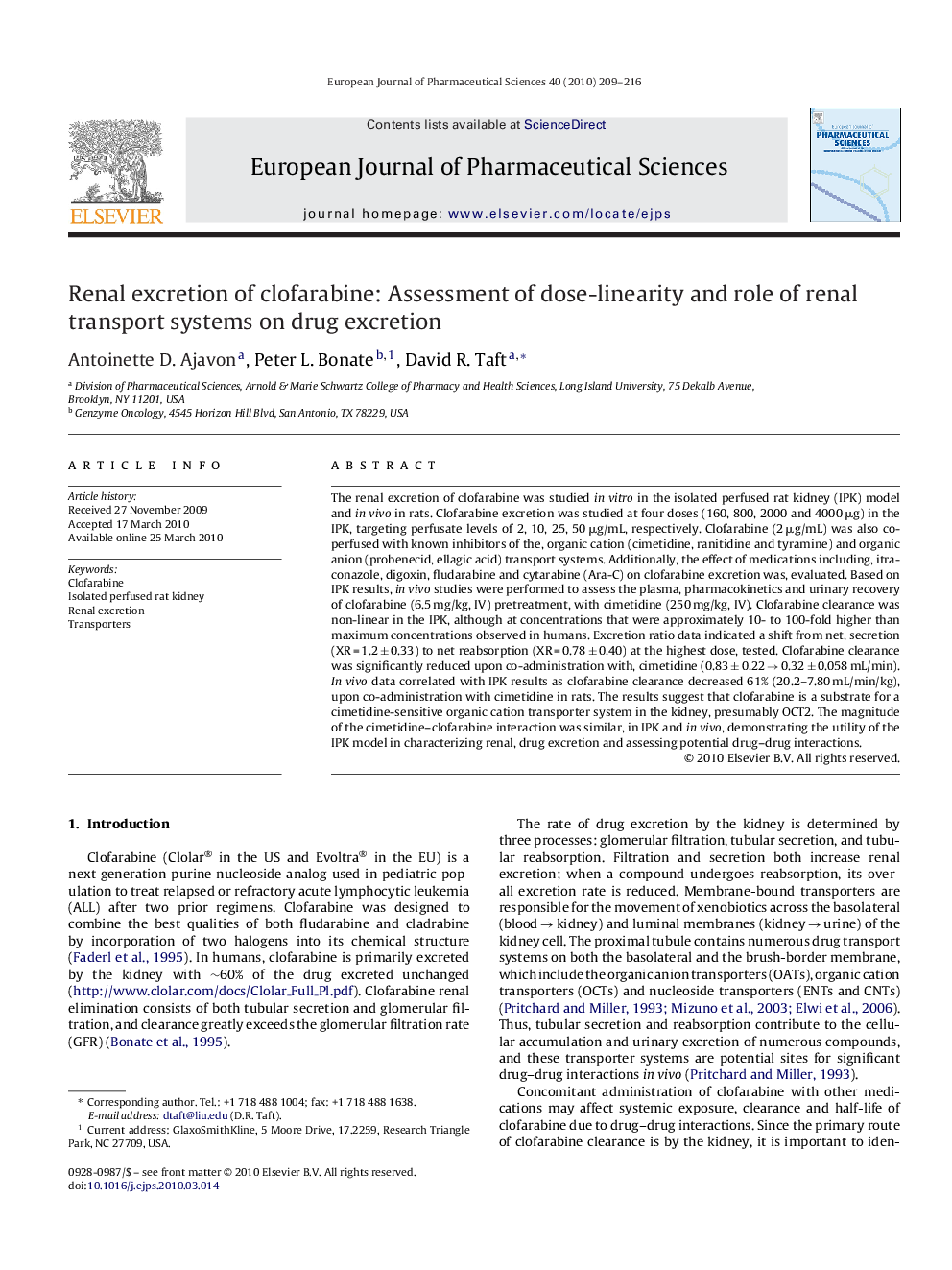| Article ID | Journal | Published Year | Pages | File Type |
|---|---|---|---|---|
| 2482088 | European Journal of Pharmaceutical Sciences | 2010 | 8 Pages |
The renal excretion of clofarabine was studied in vitro in the isolated perfused rat kidney (IPK) model and in vivo in rats. Clofarabine excretion was studied at four doses (160, 800, 2000 and 4000 μg) in the IPK, targeting perfusate levels of 2, 10, 25, 50 μg/mL, respectively. Clofarabine (2 μg/mL) was also co-perfused with known inhibitors of the, organic cation (cimetidine, ranitidine and tyramine) and organic anion (probenecid, ellagic acid) transport systems. Additionally, the effect of medications including, itraconazole, digoxin, fludarabine and cytarabine (Ara-C) on clofarabine excretion was, evaluated. Based on IPK results, in vivo studies were performed to assess the plasma, pharmacokinetics and urinary recovery of clofarabine (6.5 mg/kg, IV) pretreatment, with cimetidine (250 mg/kg, IV). Clofarabine clearance was non-linear in the IPK, although at concentrations that were approximately 10- to 100-fold higher than maximum concentrations observed in humans. Excretion ratio data indicated a shift from net, secretion (XR = 1.2 ± 0.33) to net reabsorption (XR = 0.78 ± 0.40) at the highest dose, tested. Clofarabine clearance was significantly reduced upon co-administration with, cimetidine (0.83 ± 0.22 → 0.32 ± 0.058 mL/min). In vivo data correlated with IPK results as clofarabine clearance decreased 61% (20.2–7.80 mL/min/kg), upon co-administration with cimetidine in rats. The results suggest that clofarabine is a substrate for a cimetidine-sensitive organic cation transporter system in the kidney, presumably OCT2. The magnitude of the cimetidine–clofarabine interaction was similar, in IPK and in vivo, demonstrating the utility of the IPK model in characterizing renal, drug excretion and assessing potential drug–drug interactions.
